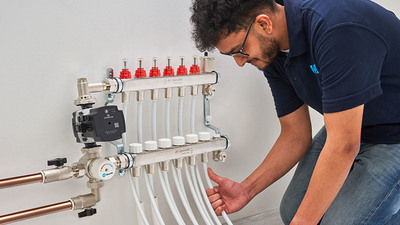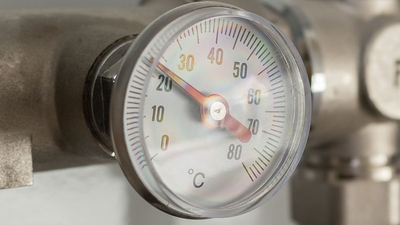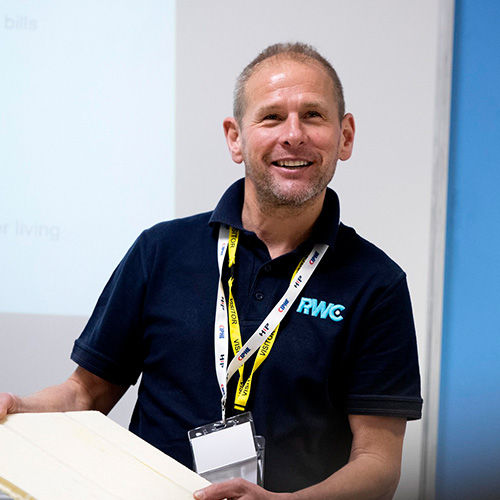Making sure UFH systems run safely and efficiently for years to come

Underfloor heating (UFH) is incredibly popular with homeowners, providing an effective heating solution in the home during colder months. With many homeowners choosing to use smart heating systems, UFH can deliver heating to specific rooms or ‘zones’ around the house as and when needed, which also helps save money on energy bills.
As with any heating system though, they aren’t used all-year-round, which requires installers to be mindful of not only how these systems are best installed, but also maintained for the avoidance of faults or problems developing over time. Maintaining wet, or ‘water-based’ underfloor heating however is relatively easy, and installers can service UFH by following a few simple steps and best practice.
Does underfloor heating require maintenance?
The short answer is yes. The installation of UFH is popular with homeowners for two main reasons: as an environmentally friendly option that saves on energy bills and that it requires very little maintenance.
Many homeowners will enjoy the benefits of underfloor heating for many years without encountering a problem. But to prevent problems occurring, there are a few things to look out for to ensure wet underfloor heating systems remain healthy.
Wet underfloor heating system maintenance
A wet UFH system should be serviced as often as radiators are serviced – which is typically once a year. As wet UFH uses water from a boiler to heat a home, there are certain actions required to keep it running smoothly.
Bleeding
Bleeding a system isn’t something that should require doing often, however, air can get trapped into a system that needs to be released. Once bled, the circulation of heated water in the system becomes free. Trapped air doesn’t represent a major problem, but it can affect the efficiency of the system and the even distribution of heat.
Flushing the system
If the customer has noticed a drop in the performance of the heating system, it may require a flush to unclog the system. Wet systems benefit from the occasional flushing, but it isn’t something that needs to be done often. The process is quite simply flushing each circuit out individually at the manifold and then treating the water with an inhibitor.
Flushing the system also allows a chance to replace the fluid with fresh water that retains heat better. With sludge building up over time, homeowners need to be aware of this in case issues return later.

Underfloor Heating Maintenance and Servicing Checklist for Installers
To make it easier for installers, RWC has put together a quick UFH servicing checklist for installers.
1. Check system pressure
Check the pressure gauge on the flow bar of the manifold. A system operating normally would read a pressure of 1-2 bar.
2. Check the colour of the water in the flow meters
While it’s normal to get some discolouration, if the glasses are very brown or dirty it’s a sign that sludge has built up in the system, so it should be flushed and re-dosed with an inhibitor.
3. Remove excess air in the system
This can be done via the air vent on the top bar of the manifold. This step can be done manually every year, but best practice is to fit an automatic air vent which automatically expels trapped air from the system.
4. Check the system is independently firing the boiler
All demands on the boiler should be stopped, then activate one zone of the UFH at a time by turning the thermostat right up. Upon doing this, the pump, boiler relevant actuator valve and zone valve should activate.
5. Repeat step 4 for each UFH loop
It’s recommended that installers repeat step 4 to ensure each thermostat is sending the correct signals when requesting heat. This should be carried out with the rest of the system cold, so each UFH zone can be tested individually.
6. Check thermostat programming
If a digital thermostat is installed, it’s important to check that the programming not only has an efficient heating pattern but also matches the homeowner’s choices.
7. Advise homeowners to periodically turn heating on
As the water for UFH is distributed through the manifold and is powered by a mechanical pump, this pump can potentially seize up if left idle once winter has passed and heating is turned off for a long period of time. Advise homeowners to periodically turn the heating on to prevent this from happening.
How often should an underfloor heating system be serviced?
While an underfloor heating system typically doesn’t require much maintenance, there’s no harm in giving it a check-up once a year. This way faults can be identified earlier and rectified prior to the autumn and winter heating seasons.

Find everything you need for underfloor heating
Underfloor heating is here to stay, especially with heat pump technologies growing in tandem, and whether you need component repairs and upgrades during maintenance or a full installation, you can find all the underfloor heating parts you’ll need for every type of job -available within RWC’s JG Underfloor range.
Not only this, but with one of the largest technical teams in the UK, we’re on hand to help with your next UFH project – from free CAD drawings for planning through to best practice on installation, commissioning and more.
